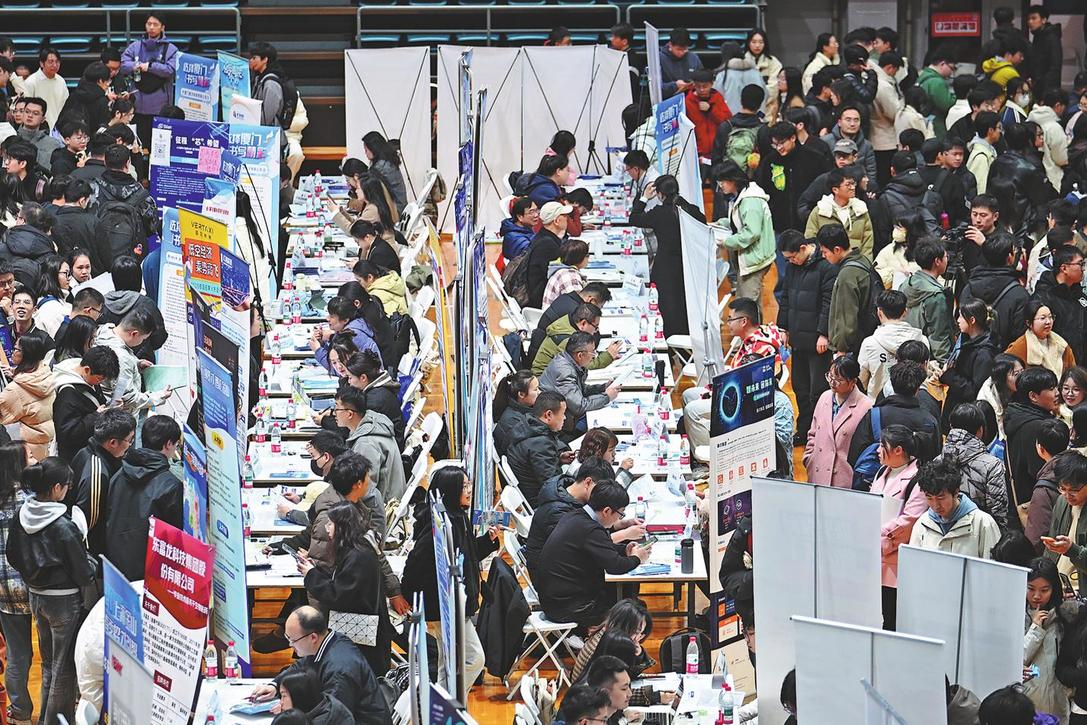Kremlin eyes shifting momentum on yearslong crisis
By Ren Qi in Moscow | China Daily | Updated: 2024-02-24 07:17

When Russia's special military operation in Ukraine began in February 2022, some predicted it might take as few as three days for Russian forces to capture the capital Kyiv.
But with the conflict now entering its third year, Moscow seems to be trying to turn the enduring battle to its advantage — by biding time and waiting for Western support for Ukraine to wither, while it maintains steady military pressure along the front line.
Russian President Vladimir Putin has repeatedly signaled a desire to negotiate an end to the fighting, but said Russia will hold onto its gains. At Putin's annual news conference in December, "when will the conflict stop" was the first question asked.
In an interview with former Fox News host Tucker Carlson earlier this month, Putin urged the United States to push its "satellite" Ukraine into peace talks, declaring that "sooner or later, we will come to an agreement".
As the Kremlin watches for more signs of crumbling Western support, Russian forces have recently captured the eastern stronghold of Avdiivka after a fierce battle in which Ukrainian forces reported a desperate shortage of munitions. The seizure set the stage for a potential Russian push deeper into Ukraine-held territory.
Kyiv said it withdrew soldiers from the stronghold to save their lives.
"While no large-scale offensive is currently taking place, Russian units are tasked with conducting smaller tactical attacks that at minimum inflict steady losses on Ukraine and allow Russian forces to seize and hold positions," said Jack Watling and Nick Reynolds of the Royal United Services Institute. "In this way, the Russians are maintaining a consistent pressure on a number of points."
Putin had made increasingly confident statements recently ahead of Russia's presidential election in March, declaring Ukraine "does not have a future" and — in the interview with Carlson — that a strategic defeat of Russia is "impossible by definition".
Analysts said only drastically ramped up Western support for Ukraine as it runs out of munitions can change the momentum.
"It is a race by both sides to rebuild their offensive capacity," Andrea Kendall-Taylor, senior fellow at the Washington-based Center for a New American Security, said.
"If the Western funding does not come through, if Russia gains some sort of advantage, then they have the possibility of making some more gains. The momentum has shifted."
Kendall-Taylor added that if Ukraine can hold its lines this year, it could pressure Russia more next year if new resources come through.
Although the summer brought some Ukrainian successes, there was no breakthrough on land. Limited advances continue at great cost to both sides and the implications for Ukraine are grim. The implications for Russia are not much better, as people from both sides started to want a cease-fire, experts said.
By far, more than 10 million civilians have been evacuated from their homes and there has been a huge loss of life. Exact figures on military casualties are unclear, as both Kyiv and Moscow give little away.
Military mobilization
To keep the conflict away from day-to-day life in Russia, the Kremlin mobilized 300,000 reserves in October 2022. Nine months later, the maximum age limit for reservists to be called up was raised to 55 in another push to bolster numbers.
Ukraine is also scrapping age limits to increase military mobilization. A current bill in the Ukrainian parliament will lower the minimum age that civilians can be mobilized from 27 to 25, making it harder for those trying to avoid being drafted. There are also moves to raise the current limit of 60 for personnel and 65 for officers.
Both sides have also suffered heavy equipment losses over the course of two years. It is estimated that Russia has lost more than 3,000 tanks, its entire pre-conflict inventory. Moscow has now placed its economy on a wartime footing and moved defense factories to round-the-clock production in three shifts.
Russia's GDP grew 3.5 percent last year, with a 7.4 percent growth in manufacturing. This allows ordinary life to continue in Russia despite the conflict and also helps to smooth out some inequality between the wealthier and poorer regions, which suffer a disproportionate number of casualties.
Russia's spending on defense is now 6 percent, a figure that some economists consider unsustainable without huge cuts in other public expenditure.
Meanwhile, Ukraine has suffered much more heavy losses, but Western military replenishments have allowed it to maintain inventories while upgrading quality, former diplomat John Dobson said.
But given the losses sustained by both sides and the attritional character of trench warfare, the current stalemate is likely to persist, he said. The bottom line is that neither side can carry out a large-scale attack without incurring very heavy casualties, and that is likely to continue for the foreseeable future.
renqi@chinadaily.com.cn























